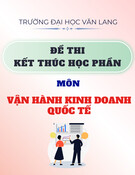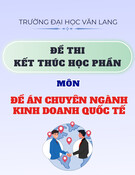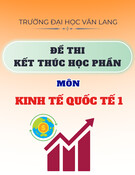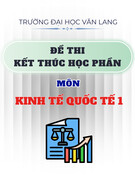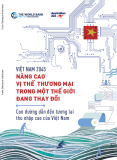CHAPTER ONE
MNCs & MULTINATIONAL FINANCIAL MANAGEMENT
INTERNATIONAL FINANCIAL MANAGEMENT
NGO THI NGOC HUYEN
TẠI SAO HỌC TÀI CHÍNH QUỐC TẾ?
NỘI DUNG CHƯƠNG 1
• Ra quyết định đầu tư và tài trợ (Making investment and
financing)
• Quyết định trên thị trường toàn cầu (decisions in a global
market)
• Kiểm soát dòng tiền ứng với từng quyết định (Cash flows
associated with these decisions)
• Tại sao học tài chính quốc tế? • Mục tiêu của MNCs • Sự xuất hiện và tăng trưởng của MNCs • Quốc tế hóa của kinh doanh và tài chính. • Quản trị tài chính quốc tế: Lý thuyết và thực hành
• Rủi ro tương ứng (Risks associated with these cash flows) • Thị trường tài chính quốc tế (The international financial
markets)
4
1
THỊ TRƯỜNG TÀI CHÍNH QUỐC TẾ
LÝ THUYẾT THƯƠNG MẠI QUỐC TẾ
• Nghiên cứu về (Involves the study of):
Imperfect Markets #1
– Chính sách tỷ giá - Exchange rate regimes
Comparative Advantage #
– Định chế tài chính - Financial institutions
– Phương tiện tài chính - Financial instruments
Product Cycle #2
– Mô hình tài chính quốc tế - International finance models
“A Flat World” #3
– Những vấn đề tài chính quốc tế - Current international finance issues.
• Những nghiên cứu để hiểu thị trường, các công cụ và rủi ro cũng như lợi ích tác động đến quyết định đầu tư và tài trợ.
5
6
MULTINATIONAL CORPORATION
MULTINATIONAL CORPORATION
• Mục tiêu Goal of MNCs is maximizing shareholder’s wealth – The SWM model – Shareholder Wealth Maximization (US company)
• Khái niệm
• Nguồn gốc của sự phát triển
• Quá trình phát triển
– The CWM model – Corporate Wealth Maximization (European & Japanese company): requires a single goal of value maximization with a well-defined score card
7
8
2
OPERATING & FINANCING CASH FLOWS
TYPICAL FOREIGN EXPANSION SEQUENCE
Financial Cash Flows
Licensing
Dividend paid to parent Parent invested equity capital Interest on intrafirm lending Intrafirm principal payments
Exporting
Sales
Distribution
Production
Service
Parent
Subsidiary
subsidiary
system
oversea
facilities
Payment for goods & services Rent and lease payments Royalties and license fees Management fees & distributed overhead
Operational Cash Flows
9
Chapter 1
10
Dividends Fees, Royalties, corporate overhead for services
HEÄ THOÁNG TAØI CHÍNH CUÛA MNCs
• Heä thoáng taøi chính cuûa MNCs: • Chuyeån giaù haøng hoùa vaø dòch vuï trong noäi boä coâng ty
Interest and repayment of credit/loan Equity investment Loans Credit on goods and services
Vay vaø cho vay giöõa caùc coâng ty con
Capital goods
Thanh toaùn vaø chi traû coå töùc
Taêng hoaëc giaûm thôøi gian thanh toaùn giöõa caùc coâng ty con
Thanh toaùn caùc khoaûn tieàn baûn quyeàn coâng ngheä
Nhöõng thöông vuï traû chaäm laøm gia taêng nhu caàu taøi chính
Technology Management Intermediate goods Finished goods Technology/market intelligence
s w o l f
i
l a i c n a n F
11
Chapter 1
12
3
HEÄ THOÁNG TAØI CHÍNH CUÛA MNCs
HEÄ THOÁNG TAØI CHÍNH CUÛA MNCs
NHÖÕNG THUAÄN LÔÏI VEÀ NGHIEÄP VUÏ TAØI CHÍNH CUÛA MNCS:
Nhöõng ruûi ro veà nghieäp vuï taøi chính cuûa MNCs:
• Nhôø khaû naêng chu chuyeån voán vaø lao ñoäng khaép toaøn caàu cho pheùp
• Ruûi ro veà ngoaïi hoái vaø laïm phaùt
MNCs môû roäng taàm hoaït ñoäng cuõng nhö nghieäp vuï taøi chính
• Söï khaùc bieät veà thueá suaát quoác teá
• Nhôø tieáp caän moïi thò tröôøng voán neân MNCs coù theå giaûm toång chi
• Qui ñònh kieåm soaùt tieàn teä
phí, chòu thueá thaáp, vaø ña daïng hoùa nguoàn voán
• Caùc ruûi ro chính trò nhö ban haønh luaät tröng thu taøi saûn
• Taêng maïnh khaû naêng ñoái phoù vaø thöông löôïng hôïp ñoàng ñaàu tö vôùi
chính phuû nöôùc sôû taïi
• MNCs coù theå tieáp caän thoâng tin kyõ thuaät môùi ôû nöôùc ngoaøi
Chapter 1
13
Chapter 1
14
INTERNATIONAL OPPORTUNITIES
HEÄ THOÁNG TAØI CHÍNH CUÛA MNCs
THÒ TRÖÔØNG TAØI CHÍNH TOAØN CAÀU VAØ QUAÛN TRÒ TAØI CHÍNH QT
Cost-benefit Evaluation for Purely Domestic Firms versus MNCs
• Thò tröôøng taøi chính vôùi phaùt trieån cuûa maùy ñieän toaùn vaø vieãn
Investment Opportunities
thoâng ñaõ taïo neân hieäu quaû cuûa thò tröôøng
Purely Domestic Firm
MNC
• Thò tröôøng taøi chính laø hình thöùc theå hieän cuûa chính saùch kinh teá.
Marginal Return on Projects
MNC
Thò tröôøng taøi chính ñöa ra nhöõng phaùn xeùt khaùch quan.
• Chæ coù nhöõng chính saùch taøi chính - tieàn teä ñuùng ñaén môùi taïo neân
Purely Domestic Firm
söï oån ñònh cuûa thò tröôøng tieàn teä.
Marginal Cost of Capital
• Nhöõng saép xeáp treân thò tröôøng seõ khoâng theå cöùu vaõn noåi maø coøn
Financing Opportunities
Appropriate Size for Purely Domestic Firm
Appropriate Size for MNC
laøm traàm troïng hôn cho ñoàng tieàn ñang tuoät doác.
X
Y
Chapter 1
15
Asset Level of Firm 16
4
VALUATION MODEL FOR AN MNC
DOMESTIC VALUATION MODEL FOR COMPANY
• Domestic Model
K = 10%
Cash Flow
Year 1
Year 2
$10,000
$10,000
Value = 10,000/ (1+10%)1 + 10,000/ (1+10%)2
E (CF$,t ) = expected cash flows to be received at
= 9091 + 6265
the end of period t
= $17,356
n
= the number of periods into the future
in which cash flows are received
k
= the required rate of return by
investors
VALUATION MODEL FOR AN MNC
VALUATION MODEL FOR MNCs
• Valuing International Cash Flows
R=10%
Year 1
Year 2
Cash Flow
Exchange rate Cash Flow
Exchange rate
Dollar
100,000
100,000
Mexico Peso
100,000
$0.10
100,000
$0.08
British Pound
20,000
$2.00
20,000
$2.50
CF(Yr 1): 100,000 + 100,000*0.10 + 20,000*2.00 = $150,000
CF(Yr 2): 100,000 + 100,000*0.08 + 20,000*2.50 = $158,000
E (CFj,t ) = expected cash flows denominated in currency j to be received by the U.S. parent at the end of period t
Value = 150,000 / (1+10%)1 + 158,000 / (1+10%)2 = $266,943
E (ERj,t ) = expected exchange rate at which currency j can
be converted to dollars at the end of period t = the weighted average cost of capital of the U.S.
k
parent company
5
IN-CLASS EXERCISE # 1
VALUATION MODEL FOR AN MNC
TOTAL OUTPUT PER WORKER
Impact of New International Opportunities on an MNC’s Value
FOOD (F) CLOTHING (C) USA 400 10
Exposure to Foreign Economies
Exchange Rate Risk
GERMANY 1000 20 OPPORTUNITY COST COST OF F (in term of C) COST OF C (in term of F) USA GERMANY USA GERMANY 1C=35F U/A U/A 1F=0.04C U/A U/A 1F=0.01C U/A U/A
Political Risk
22
1C=52F U/A U/A
SOLUTION IN-CLASS EXERCISE # 3
IN-CLASS EXERCISE # 2
TOTAL OUTPUT PER WORKER
TOTAL OUTPUT PER WORKER
TEA COFFEE
COMPUTERS
CALCULATORS
BRAZIL 300 lbs 9000 lbs
USA
10
2000
CHINA 200 lbs 5000 lbs
UK
12
3000
OPPORTUNITY COST
OPPORTUNITY COST
Cost of TEA (in term of Cof)
Cost of Cof. (in term of tea)
Cost of CAL (in term of Com.) Cost of Com (in term of Cal.) BRAZIL CHINA
USA
BRAZIL CHINA
UK
US
UK
1 pound of tea = 32 lb Cof. U/A U/A
1COM=180 CAL.
U/A
U/A
1 pound of cof = 0.035 lb tea U/A U/A
1 CAL=0.0038 COM
U/A
U/A
1 pound of cof = 0.065 lb tea U/A U/A
1COM=260 CAL.
U/A
U/A
1 pound of tea = 20 lb Cof. U/A U/A
1 CAL=0.0055 COM
U/A
U/A
23
24
6
ONLINE APPLICATION
MINI CASE: NIKE’S DECISION
• Visit FRED®, Fed's economic time-series database, at
http://www.stls.frb.org/fred for numerous economic and financial time series, e.g., balance of payment statistics, interest rates, foreign exchange rates.
• Visit http://www.ita.doc.gov/td/industry/otea (Office of Trade and
Economic Analysis) for an outlook of international trade conditions for each of several industries.
•
• Nike, a US based company with a globally recognized brand name, manufactures athletic shoes in such Asian developing countries as China, and Vietnam using subcontractors, and sell the products in the US and foreign market. The company has no production facilities in the US. In each of those Asian countries where Nike has production facilities, the rates of unemployment and underemployment are quite high. The wage rate is very low in those countries by US standards; the hourly wage rate in the manufacturing sector is less than one dollar in each of those countries, compared with about 18$ in the US. In addition, workers in those countries often operate in poor and unhealthy environments and their rights are not well protected. Understandably, Asian host countries are eager to attract FDI like Nike’s to develop their economies and raise the living standards of their citizens. Recently, however, Nike came under worldwide criticism for its practice of hiring workers for such a low pay – “next to nothing” on the world critics – and condoning poor working conditions in the host countries. Evaluate and discuss various ethical as well as economic ramifications of Nike’s decision to invest in those Asian countries.
25
26

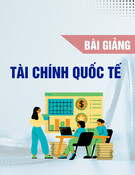
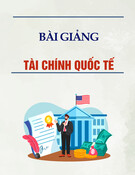
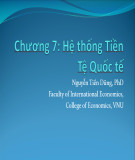
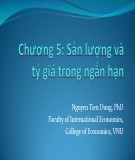
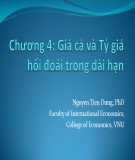
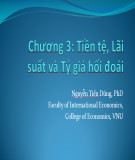
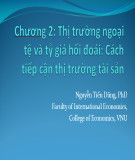
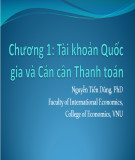


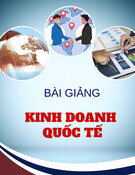
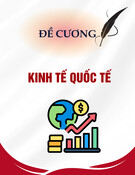
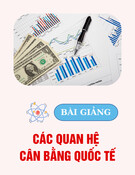
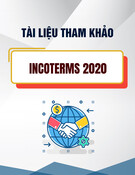
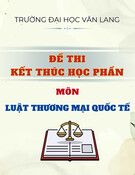
![Đề thi Luật Thương mại quốc tế học kì 1 năm 2024-2025 có đáp án (Đề 1) - [kèm đề thi]](https://cdn.tailieu.vn/images/document/thumbnail/2025/20250925/kimphuong1001/135x160/14521758785752.jpg)
